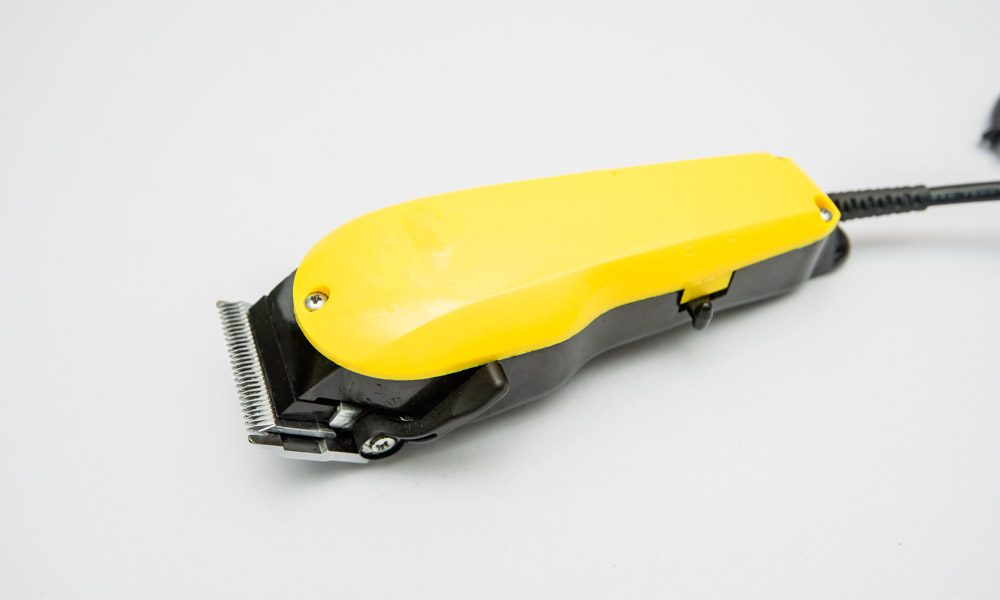Our guide to clipper cutting hair short
The great thing about a clipper cut is that it is quick, easy (when you have a few tips) and you can do it yourself or get a friend to help. Here are a few tips to help your cutting be as easy as possible.
You may choose to do this alone or with a friend who can help.
Before you clipper your hair we recommend you read Cutting hair before hair loss – commonly asked Q&A.
Our guide to clipper cutting hair short
Practical things – you may need;
- Prepared hair – it’s best to have clean, tangle free hair (some people find it easier to clipper hair when dry but you can also clipper hair when wet)
- Clean clippers with attachments (guards) – shaving without a guard is not recommended due to the possibility of ‘hard to heal’ cuts and possible infection as well as increased risks of ‘folliculitis’ – an inflammation of your hair follicle
- Tissues
- Extension lead (if needed)
- Mirror
- Sharp household scissors (for removing long hair first)
- Vacuum cleaner, dust pan and brush
- Towel or gown (some kits come with a gown)
- A bin bag to hand
Chose a clipper attachment – which determines the length of your hair
It is vital that you choose the right clipper attachment as that determines what length your hair will be cut to. Most clippers come with a guidebook and with a range of around 5–8 different attachments, normally numbered from 1 upwards. We never recommend using the ‘0’ setting, whereby a guard is not used due to the possibility of ‘hard to heal cuts and possible infection. However you can choose to use from guard 1 (very short) which is as close to the skin as you can get safely using a clipper guard. Each clipper will have its own guide to clipper attachment lengths.
Always use clippers on clean hair
It is best to ensure that your hair is clean without any tangles or styling products in it. You will want the clippers to glide through the hair as cleanly as possible. Do not use clippers on wet hair unless instructions allow – most modern clippers are designed to be used on wet hair but do check first.
It is easier and best advised to consider removing longer length hair with scissors first. You don’t have to do this in a way to create a hair style but rather to help remove the bulk of hair so that the clipper can glide through easier.
Beginning to clipper
Most clipper sets come with a booklet which offers tips on cutting, below is our guide:
If you are going to have a go at using clippers on your hair yourself, you will find it easier on a practical level to be in front of a mirror (if your clippers don’t reach try using an extension lead). If someone else is going to do this for you, then it may not be necessary and indeed some people say that they would rather not sit in front of a mirror while the hair is being cut.
Clipper tips:
- If you don’t want to be interrupted let others in the household know that you need some privacy
- Pop a gown or towel on
- Having selected your clipper attachment (the length) ensure that the attachment is securely in place
- Then move round to the sides, angling the clippers up towards the top of the head (if someone is clipping your hair for you, you may wish to hold a tissue over your face, at the forehead to avoid hair falling in your eyes)
- Now you should see that most of the hair is removed – if the length is as you wish now run the clippers over the head in all different directions to neaten up any stray hairs
- Once you have achieved the length you wish you may like to rinse your scalp to remove any loose hairs
- Some people find that once they have clippers the hair (using a guard 2 or 3) the hair looks patchy. This is usually because some of the hair has completely fallen off and results in bare patches. In these cases it can be helpful to use a number 1 guard (the shortest guard) and cut the hair down as short as possible.
Dealing with how you feel and scalp care
Take a look at our scalp care section to discover some ideas about dealing with how you feel as well as how to best care for your scalp as well as being aware of and taking care of any signs of problematic scalp issues such as ‘folliculitis’ (an inflammation of your hair follicle).
Well done you have made a great step towards taking control of your hair loss.
You may like to read up on Scalp care, Hats, scarves & headwear or take a look in our Wig guide.
Next planned review: February 2022

